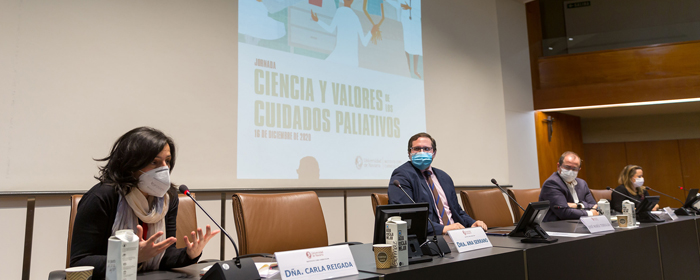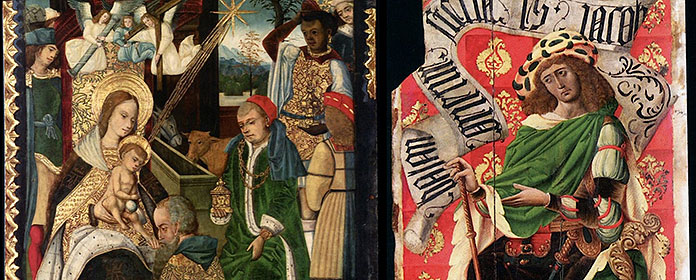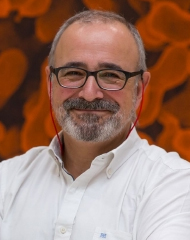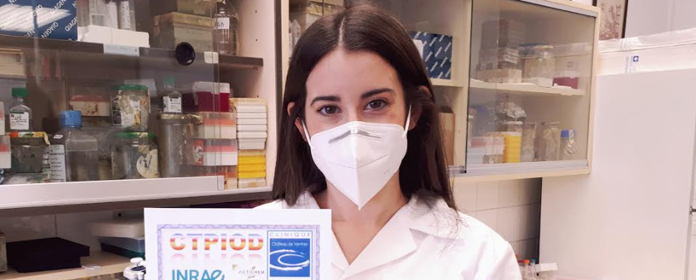Virus para transportar genes, otra estrategia anticáncer
David T. Curiel, director del Centro de Terapia Génica de la Universidad de Alabama (EE. UU.), mostró sus logros en el CIMA
Nuevas estrategias frente al cáncer pasan por utilizar virus para transportar genes que maten las células tumorales. De ello habló en el Centro de Investigación Médica Aplicada (CIMA) de la Universidad de Navarra uno de los referentes mundiales en este campo. Se llama David T. Curiel y dirige el Centro de Terapia Génica de la Universidad de Alabama en Birmingham (EE. UU.). Allí tiene a su cargo un equipo de más de 50 científicos, entre médicos, biólogos y expertos en diversas disciplinas relacionadas con las ciencias de la vida. Su objetivo es convertir a la terapia génica en una nueva modalidad terapéutica que revolucione la práctica médica y consiga mejorar el pronóstico de enfermedades tan graves como el cáncer.
El Dr. Curiel intervino en los seminarios del área de Terapia Génica y Hepatología del CIMA, con cuyos planteamientos coincide al defender un modelo de investigación traslacional. Según explicó, el objetivo es conseguir una "estrecha relación entre el laboratorio y la clínica, lo que se denomina bench to bed (del banco de laboratorio a la cama del paciente)". El propio Dr. Curiel es un ejemplo de médico que, en un momento determinado de su carrera asistencial, busca en la investigación biomédica la solución a las limitaciones que encuentra en la medicina clásica.
Virus "asesinos" de tumoresDavid Curiel explicó las últimas novedades de terapia génica, que consiste en la transferencia de material genético para tratar enfermedades: "Hoy día disponemos de abundante información sobre qué genes podrían tener un efecto curativo en diversas dolencias. Lo difícil es conseguir un método efectivo y seguro para introducir estos genes en las células que los requieren y regular su función dentro de ellas".
Precisamente la resolución de este problema centra las investigaciones del Dr. Curiel de los últimos años. Para ello ha elegido la estrategia de utilizar virus como vehículo para transportar genes, aprovechando estos microorganismos para introducir su material genético en nuestras células.
En su laboratorio se ensayan diversas modificaciones de un virus relativamente inocuo, el adenovirus, responsable de algunos de los resfriados e infecciones intestinales más comunes. El equipo del Dr. Curiel consiguió modificar estos virus mediante técnicas de ingeniería genética para que infecten selectivamente células de tumores y dejen libres a las células de los tejidos normales.
"La tarea es sumamente delicada y requiere un profundo conocimiento, tanto de la biología del virus como de los distintos tipos tumorales. Es necesario identificar los componentes del virus responsables de la unión de éste con las células, y sustituirlos por otros que dirijan al virus al interior de las células cancerosas. Pero no basta con que el virus infecte la célula cancerosa. Es necesario que la elimine", dijo.
Con este objetivo de lucha contra el cáncer, en su laboratorio consiguieron desarrollar virus asesinos para los tumores. Utilizaron diferentes estrategias, como introducir genes tóxicos en los propios virus o dotar a los virus de la capacidad de reproducirse sólo dentro de las células tumorales, proceso que conlleva su muerte, sin afectar a otros tejidos. De este modo las células acumulan virus hasta que mueren, y una nueva generación vírica se libera dispuesta, si todo va bien, a seguir infectando y matando más células hasta la completa destrucción del tumor. El Dr. Curiel señaló que algunas de estas estrategias han dado resultados prometedores en modelos animales. Próximamente se probarán en grupos reducidos de pacientes de cáncer, en lo que se denominan ensayos clínicos de tipo I.





